
From Croatian War Child To A National Hero: Tracking Modric’s Journey
Croatia has been to six World Cups and reached the semi-final on three occasions, including being losing finalists in Russia four years ago.
The 37-year-old national hero, Luka Modric led his Croatian side far into the World Cup again.
Modrić‘s Croatia will be battling it out for a place in the World Cup final. The Real Madrid midfielder, who is captaining his country in the tournament in Qatar, will take on Argentina in the semi-finals. The clash will be played on Tuesday.
After writing his name in the history books in the 2018 World Cup, where he led his side to a second-place finish and clinched the Player of the Tournament award, Modrić will be hoping to reach the final a second time.
After finishing second in Group F, his team knocked out both Japan and Brazil on penalties in the last 16 and quarter-finals, respectively.
However,the midfielder had an unbelievably difficult start to life back home in Croatia.
Modric was born in the hamlet of Modrici, a small village north of the city of Zadar, the oldest continuously inhabited Croatian city.
Unfortunately, his childhood coincided with the Croatian War of Independence. Due to the conflict, he would go through many traumatic experiences on his journey to becoming a footballing icon.
Modric lived with his grandfather in a small stone house located just north of the Modrici hamlet, while his parents worked long hours at a nearby factory. At just 6-years-old his beloved grandfather was shot dead by Serbian rebels and his family fleed the small village while their house was burned to the ground.
Modrić visited his childhood house that got destroyed during the war when he was a kid.
His story is so inspirational!🙏🏻 pic.twitter.com/0WuJ5zAc6m
— Madrid Xtra (@MadridXtra) July 22, 2021
The family were forced to move into a refugee hotel in the town of Zadar, but the war was still ongoing in the province. Modric’s father joined the Croatian Army as an aeromechanic, but his mother tried her best to make sure that Luka’s childhood was unaffected. Many parents in the area attempted to do the same, allowing the youngsters to enjoy the normal things in life, such as playing football.
Thousands of bombs were dropped on the city, but the Croatian midfielder focused on developing his skills. His parents were offered the chance to return to their family home but instead opted to remain in Zadar to allow their son to continue his development.
Luka Modric as a child 😍 pic.twitter.com/OxkYqoWq4N
— Ash (@AshStudio7HD2) March 7, 2015
However, his parents weren’t necessarily invested in the idea of Modric becoming a professional footballer and simply wanted the youngster to enjoy his childhood surrounded by his new friends.
But after years of watching the youngster, it became clear they could no longer ignore his talent. Although his parents struggled financially, they scraped together money to send their son to representative camps for training.
A coach at the camps recommended Modric to one of the biggest clubs in the region, but they declined the offer believing that the player was too small and weak for professional football.
At the age of 16, Modric was then recommended to Dinamo Zagreb by the head of a local youth academy. He was accepted into the team’s youth academy and after spending a season with them, was loaned to Zrinjski Mostar in the Bosnian Premier League. Incredibly, aged just 18 at the time, the Croatian would go on to win the Bosnian Premier League Player of the Year award.
The following year Modric was loaned to Inter Zapresic, who like Zagreb, also played in the Croatian top flight. He helped the team achieve second place in the league and a spot in the preliminary round of the UEFA Cup, providing four goals in 18 appearances. The Croatian midfielder also won the Croatian Football Hope of the Year award, the equivalent of a young player of the season award.
In the 2005-06 season, Modric returned to Dinamo Zagreb and signed a ten-year deal with the club. With the earnings from his new contract, he immediately purchased a new flat in Zadar for his family. In his first full season at the club, the midfielder contributed seven goals in 31 appearances, helping Zagreb to win the league.
21-year-old Luka Modrić for Dinamo Zagreb during the 2007/2008 season:
☑️37 games
⚽️16 goals
🅰️12 assists
🥇Croatian Footballer of the YearCaptain, leader, MVP. The Beginning of Legend. 🇭🇷 pic.twitter.com/F70h2D4lHo
— Football Talent Scout – Jacek Kulig (@FTalentScout) December 23, 2021
In 2008 Tottenham confirm the signing of the Croatian for a fee of £16.5m, equalling the club’s record signing at the time. Modric struggled initially with poor form and injuries but the introduction of Harry Redknapp as manager saw the midfielder flourish.
ON THIS DAY: In 2008, Tottenham completed the signing of Luka Modric from Dinamo Zagreb for a reported £15.8m.
What a player. 😍 pic.twitter.com/Mz32uLeAyV
— Squawka (@Squawka) April 26, 2017
Despite never winning any major honors with Tottenham, Modric was seen as a diamond in the rough. The midfielder made a total of 157 appearances for the London club, scoring 16 goals and registering 21 assists. But it was his style of play and natural talent that shone through, rather than his statistics.
In 2012 Real Madrid announced the signing of Modric from Tottenham for a fee of £30m, where he remains to this day. The Croatian has carved out a legendary career at Los Blancos, helping the club win an amazing haul of trophies whilst also being recognized individually.
His honors include two La Liga titles, a Copa del Rey, four Supercopa de Espana, three UEFA Super Cups, three FIFA Club World Cups and four Champions League titles. He also helped his national team to a World Cup final in 2018, where they, unfortunately, lost to France in a thrilling contest that ended 4-2. But his efforts were far from unnoticed as the midfielder was awarded the Ballon d’Or, ending the monopoly held by Cristiano Ronaldo and Lionel Messi for ten years.
His impact on the 2018 FIFA World Cup was monumental. In a burst of outstanding play, he scored twice and sent out an assist, leading to his selection as the tournament’s top performer and the subsequent receipt of the Golden Ball trophy.
So, it is safe to say that after all that success, the Croatian supporters have high hopes for this World Cup edition. Now he has led Croatia to the semi-finals of World Cup 2022 at the age of 37. Once again, Luka Modric will be essential to Croatia’s chances of winning.
- Bilateral Meeting Between Qatar’s Emir and Nepal’s Prime Minister, Signing of Agreements Awaited
- Nepal Should Capitalize on Bilateral Relationship with Russia: FNCCI President
- President Poudel Hosts Banquet for Qatar’s Emir, Cultural Performances Highlight the Evening
- President Requests Qatari Emir’s Help to Free Nepali Student Held by Hamas



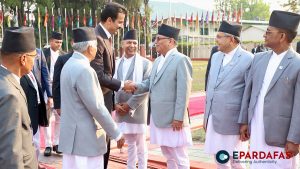
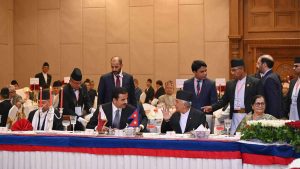

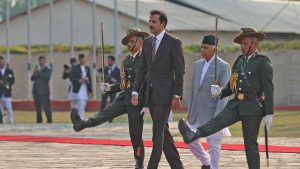
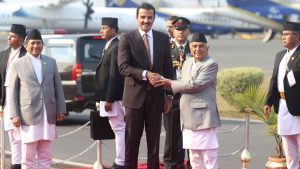
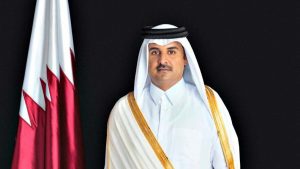






Comments